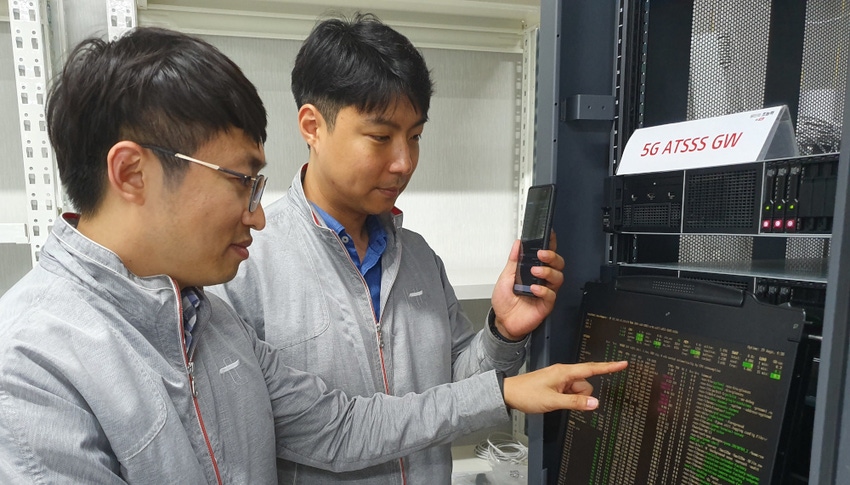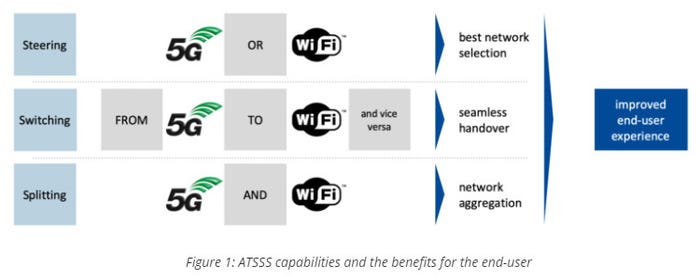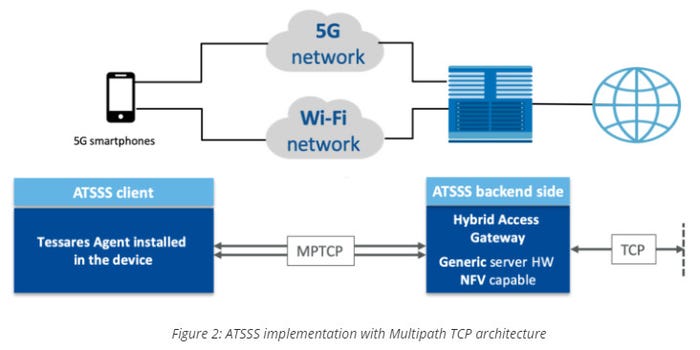The first commercial test of a 3GPP Release 16 technology designed to improve dynamic switching between 5G and wifi has been claimed by KT and Tessares.
August 29, 2019

The first commercial test of a 3GPP Release 16 technology designed to improve dynamic switching between 5G and wifi has been claimed by KT and Tessares.
The proper name for the tech is Access Traffic Steering, Switch and Splitting and the reason we care about it is that is could significantly improve the way devices choose and switch between cellular and wifi, depending on the circumstances. ATSSS was defined in collaboration with KT, Apple, Deutsche Telekom, Orange, and Cisco and is based on Multi-Path TCP technology, apparently. Here are a couple of diagrams from Tessares that explain the point of it further.


“ATSSS technology reduces the initial session setup time to achieve 5G ultra-low latency in a multi-radio context, resulting in a setup delay of less than half compared to previous approaches,” said the press release. KT and Tessares seem to be spearheading the development and standardization process.
“The success of this low latency multi-radio access technology test will allow customers to take advantage of existing LTE and Wi-Fi networks, as well as 5G, to enable wireless services at higher speed and quality.” said Sun-woo Lee, SVP of the KT Infra R&D Laboratory. “KT will continue to develop core 5G technologies to strengthen its R&D capabilities.”
“We are convinced that mobile Internet usage requires an efficient combination of all existing network assets such as WiFi, LTE and 5G,” said Denis Périquet, Tessares CEO. “We are delighted to have collaborated with KT, who is clearly leading the 5G race, to demonstrate the benefits of ATSSS.”
This technology presumably promises all kinds of wireless cleverness, but we’d be happy if all it achieved was to make devices smart enough to dynamically pick the best network available and make manually switching between them less fiddly than it currently is.
About the Author(s)
You May Also Like








.png?width=300&auto=webp&quality=80&disable=upscale)


_1.jpg?width=300&auto=webp&quality=80&disable=upscale)


.png?width=800&auto=webp&quality=80&disable=upscale)